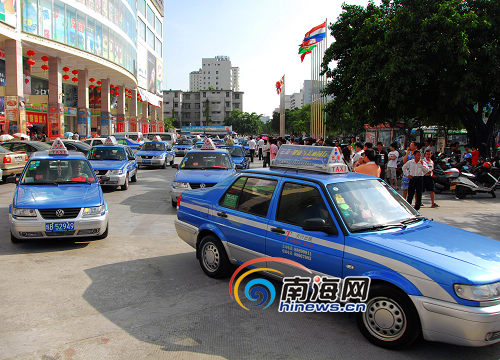Mass unrest have been on the rise throughout 2008 and China needs to learn how to deal with them better so as to prevent similar incidents from recurring, say leading commentators.
A strike by Chongqing cab drivers on November 3 was a flashpoint that triggered copycat actions across the country. The latest was on November 20 in Shantou and Chaozhou where cab drivers stopped work and gathered in their hundreds outside government buildings to demand officials crack down on unlicensed cabs.
But the Chongqing strike was a wake up call not only to their colleagues in other areas, but also to some local governments who had been backward in their approach to dealing with unrest. "This year, governments have been more open with information when faced with such incidents. They have given priority to the people's wellbeing," said Hu Baijing, crisis management specialist and deputy director of the Institute of Public Opinion at Renmin University of China (RUC). "The government has been changing its policy and philosophy. It is a big step forward."
Turbulent November

|
|
Sanya cab drivers go on strike on November 10 (File Photo)
|
Cab drivers in Sanya on Hainan Island were the first to follow the Chongqing example. At about 6 a.m. on November 10, more than 200 cab drivers rallied in front of Sanya's city government building, protesting against the monopoly position of taxi companies, high cab rental fees, and competition from unlicensed cabs. Three hours later cab drivers in Yongdeng in Gansu Province struck. Of 280 legal cabs in Yongdeng 160 joined the strike.
Eight days later, bus drivers in Dali, Yunnan, went on strike to protest against a move to transfer ownership of buses from the workers to their employer, the Dali Transport Company.
For the most part these actions were peaceful.
But in Longnan, Gansu, a protest turned violent. More than 30 residents of Dongjiang Town, Wudu District, who were facing resettlement, gathered at the city government building around 9:30 a.m. on November 17, demanding the authorities allay their concerns about their farmland, housing and livelihoods.
Government officials met the protestors but failed to reach an agreement. That evening a bigger crowd gathered and a group of protestors burned government buildings and vehicles and battled with police.
On November 7 a similar incident took place in Shenzhen. A security guard at a checkpoint threw his walkie-talkie at a motorcyclist who had refused to stop. The motorcyclist lost control, hit a lamppost and was killed. Later that day a mass demonstration of thousands of people turned violent and a number of police patrol cars were set on fire.
But 2008 has seen even more violent protests than the one in Longnan.
On June 28 in Weng'an, thousands of people gathered in front of government buildings and police stations to protest the suspicious death of a teenage girl. Government buildings, police stations and police cars were torched.